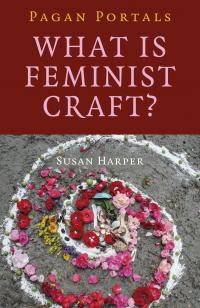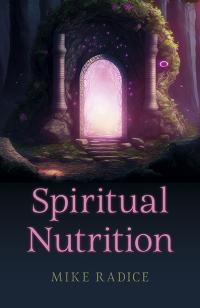

November in the Wheel of the Year Part 1: Charity and Rebellion - By Lucya Starza
In the modern Wheel of the Year, November is a month without a major pagan festival, but the wheel still turns and change is in the air. In this post I’m writing about seasonal customs in the early days of November that might not be overtly pagan, but are still relevant.
November 1 is All Saints Day and November 2 is All Souls Day in the Christian calendar, but the influence of these festivals is wide. In the pagan community book Every Day Magic, Ravenwings wrote that on that day saints are also worshipped by practitioners of Santeria, Hoodoo, Voodoo and even Stregheria. For November 2, Rachel Patterson, author of Pagan Portals – Hoodoo, wrote about Baron Samedi and Maman Brigitte:
“Baron Samedi is a Loa of the dead along with his wife Maman Brigitte. They are head of the Ghede family of Loas, the largest family of Loa in Vodou who embody the power of death and fertility. They are loud, rude (they both swear…a lot), sexual and definitely know how to have a good time. The Baron can be found at the crossroads between the worlds and greets the souls of the dead as he leads them to the Underworld. Maman Brigitte likes to drink chilli-infused rum and swears just as much as the Baron; she guards graveyards and cemeteries. This day is The Festival of the Dead, celebrate your loved ones who have passed over.”
In England, an All Souls Day custom was to bake soul cakes for poor children who went from door to door. In Catholic times, All Souls Day customs aimed to help the souls of the dead, but by the 19th century this tradition was more to help the living as an act of charity. It also turned into an adult party, with beer offered and in some places mummers plays and hobby horses – horse skulls on poles covered in a sheet. It’s a folkloric custom that can be enjoyed by pretty much anyone of any religion. And you can still use this day to donate to food banks. However, All Souls Day has been overshadowed in England by Bonfire Night on November 5.
Bonfire Night and Guy Fawkes
When I was a child, Bonfire Night – or Guy Fawkes Night – was celebrated more widely than Halloween. It’s still a big thing. Originally Guy Fawkes Night commemorated foiling the Gunpowder Plot to blow up the Houses of Parliament on November 5, 1605. Guy Fawkes, a mercenary hired by Catholic conspirators to handle the explosives, was discovered and executed. Burning the image of a man with a moustache and a tall hat to represent Guy on November 5 became the custom. It’s also worth remembering that it was traitors who were executed by burning in England rather than witches. Witches were instead hanged.
However, Bonfire Night has come to symbolize far more. In the 19th century some folklorists thought it might even have ancient pagan origins. Thomas Hardy in The Return of the Native wrote this:
"Festival fires to Thor and Woden had followed on the same ground and duly had their day. Indeed, it is pretty well known that such blazes as this the heathmen were now enjoying are rather the lineal descendants from jumbled Druidical rites and Saxon ceremonies than the invention of popular feeling about Gunpowder Plot."
The Victorian folklorists were wrong. Professor Ronald Hutton in The Stations of the Sun shows Bonfire Night isn't an ancient pagan festival. However, what interests me is the festival as a response to what's happening in the world around us as humans. Bonfire Night only burned brightly over the centuries because it morphed into other things than the foiling of Catholic conspirators. It became a celebration of riotous activity including the immolation of effigies of other unpopular people. Effigy magic is, of course, a big part of traditional witchcraft, as I explore in my book Pagan Portals – Poppets and Magical Dolls. And Steve Roud in The English Year writes: “Nowadays the word ‘guy’ is almost synonymous with effigy.”
Bonfire Night comes on the cusp of winter, and fulfills a human need to rebel against dark times as well as have fun. Hutton ends up saying this festival flourished because it’s a "potent symbol". In my own magical practice, I pay attention to potent symbols, even if they’re modern ones.
In recent decades the image of Guy Fawkes became that of the popular rebel rather than the wicked traitor. Alan Moore’s 1988 comic V for Vendetta and the 2005 film loosely based on it featured the morally ambiguous hero who donned a Guy Fawkes mask to fight fascist oppression in a dystopian version of contemporary Britain. The masks went on to be worn by real-world protestors. I’m in favour of peaceful protests rather than any that cause harm, but I believe the right to protest should be protected.
This year on, on Saturday November 6, thousands will be marching for the planet. Many pagans are environmental champions. If you want to take part in the Global Day of Action, visit https://cop26coalition.org/gda/ to find out more. November is always a time for change.
Later this month I’ll be blogging about other November customs and the seasonal transition into winter.
This is part of a series of posts I’m writing for the Moon Books Blog on the theme of the Wheel of the Year. They will be compiled and edited into a book: Pagan Portals – Wheel of the Year. Other books by Lucya Starza in the Pagan Portals series include Candle Magic, Guided Visualisations, Poppets and Magical Dolls, and Scrying. Lucya edited the community book Every Day Magic – A Pagan Book of Days.
Categories:
0 comments on this article






